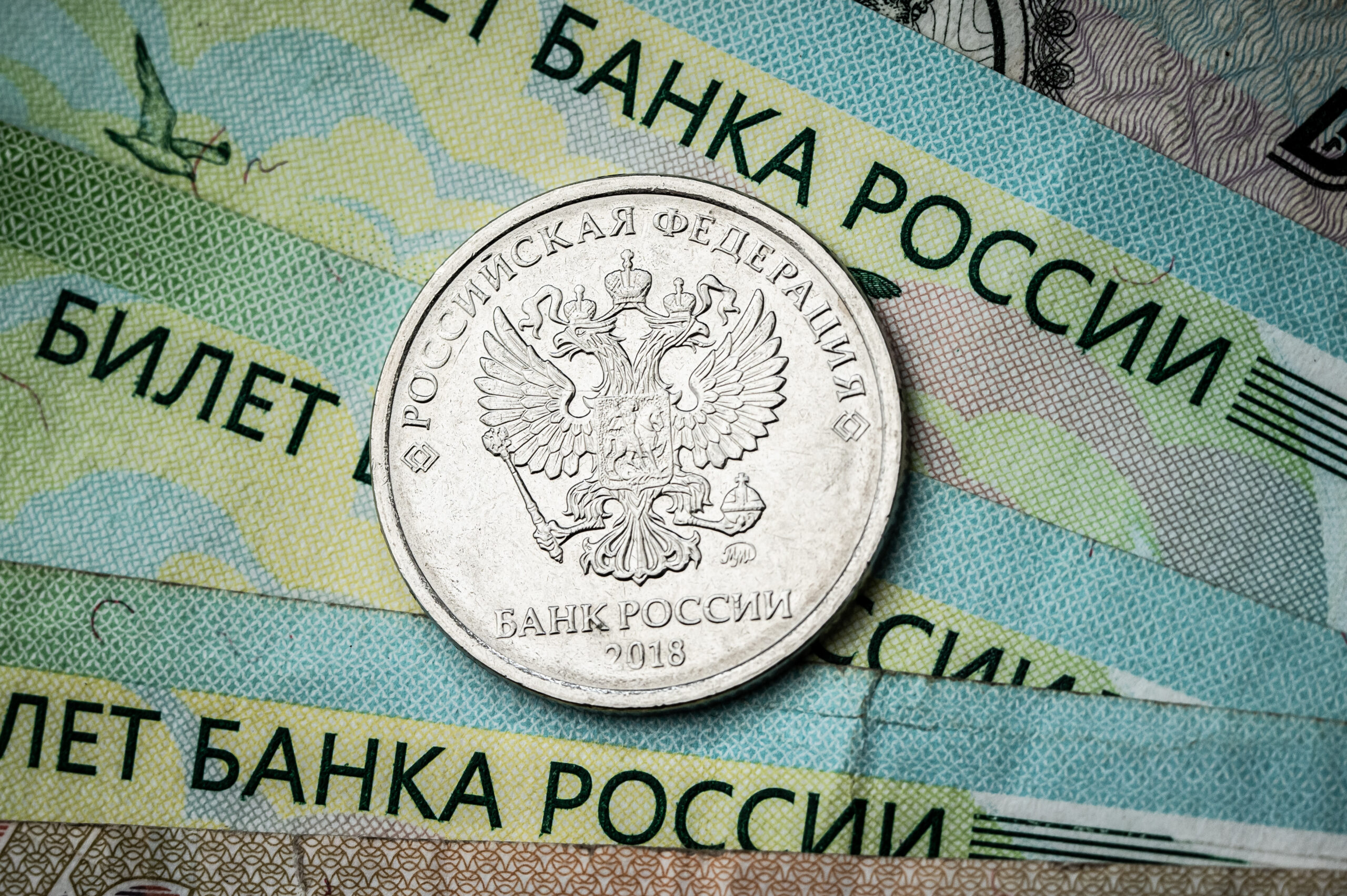At the end of January, the IMF surprised many when it issued a forecast of 0.3% GDP growth in 2023 for the Russian economy, a better figure than Germany or the UK for the year. Skeptics of the West’s approach to the economic conflict with Russia following its invasion of Ukraine seized on the announcement as evidence that Russia’s economy is impervious to the sustained pressure of sanctions. As Putin awkwardly put it, «for those who’ve tried and are trying to create problems for us, it was unexpected how effectively we’re resisting the threats to the economy created for us.» The IMF’s forecast was even more surprising given Russia’s own Ministry of Economic Development and Bank of Russia are forecasting economic contractions of 0.8% and 1−4% for 2023 respectively.
Forecasting in normal conditions is often a fool’s errand. Doing so in current conditions is far more difficult. Still, The IMF’s expectation that the Russian economy hits some sort of equilibrium this year does not add up and raises serious questions about the assumptions of those buying the rhetoric of Russia’s resilience. Where the effects of sanctions begin and Russian policy choices end is blurry; but that line is worth finding if you want to understand not just the scale of shifts in GDP, investment, or incomes, but the quality and implications of the changes taking place.
A Strange Surplus
The Russian economy did not suffer as sharp a contraction as markets initially expected last year, with the Ministry of Finance assessing the damage at a comparatively shallow 2.7% decline in GDP for 2022. By comparison, Russia’s GDP suffered a near 8% contraction in 2009, 3.7% in 2015, and 3.1% in 2020. What sets the current recession apart is the record current account surplus over the course of 2022, symptomatic of the astronomical increase in natural gas prices in Europe (due to declining volumes of piped imports from Gazprom) and the surge in oil prices experienced over the first half of the year. Russia’s net export earnings hit a record $ 580 billion, an 18% increase over 2021 and 35% higher than the average surpluses seen over the 2010s. Even as financial sanctions made it far more difficult to exchange dollars and Euros or fluidly import components and goods, the scale of the influx provided a temporary cushion. Prior recessionary shocks from the past 15 years have been accompanied with crashes in oil prices and rapid a compression of Russia’s current account surplus.
In simplified terms, an economy running a massive current account surplus is producing more than it is consuming and therefore generating savings that can, in theory, finance investments and imports with some ease. Prior to the invasion, that meant that energy, agricultural, and other commodity exporters generated foreign currency earnings while providing a baseline of demand for domestic manufacturing, especially for heavier industries such as steel piping, rolling stock, and trucks for shipping. Even as financial sanctions disrupted this traditional relationship, the relative increase in earnings and net savings seeped through. There was money to spend despite the sudden constraints on imports of crucial inputs for various industries and sectors.
Last call for investors of last resort
The 18% increase in export earnings corresponded to a wimpy 3.1% real increase in investment activity for January-September when mobilization formally began. Much of this investment was driven by companies and regional and federal authorities accelerating the timelines for existing investment plans to cushion the blow from sanctions and offering targeted relief for businesses in the form of stays on taxation and direct financial support, effectively masking the problem. Some was also driven by import substitution and pressures facing import-dependent firms to replace parts, goods, and services that were now more difficult to access. This one-off shock isn’t expected to last. Experts polled by finam expect a 5% decline in 2023, a nominal figure that may understate effects of costs sector-by-sector.
In early November last year, economy minister Maxim Reshetnikov referred to the government’s role as an «investor of last resort» to explain the policies available to intervene and lift capital investment by business. Proposals were largely technical, akin to offering specific tax exemptions or providing limited support for the modernization of existing industrial parks or meeting the criteria for more technology-intensive projects. Despite the early evidence that defense spending was driving a surge of activity in H1 2022, the Rosstat data tells a slightly different story. Over 56% of all business capex was self-funded last year, a reflection of the fact that the systemic lack of aggregate demand, lack of predictability, and dependence on export sectors encourages firms to defensively accumulate reserves rather than invest steadily. This also explains some of the resilience of last year’s investment figures; the surge in interest rates in Q2 did not materially affect investment decisions for firms using their own cash and not borrowing to complete projects. Funding that was borrowed or raised accounted for the other 43% backing fixed asset investment.
Total fixed asset investment — money sunk into building factories, offices, various sources of productive capacity — hit 16.4 trillion rubles in 2022, 12.8 trillion of which came from big business which is the more useful figure structurally as SMEs accounted for only about one-fifth of GDP pre-invasion. In the aggregate, nearly half of investment went towards construction and a third of spending went towards procuring equipment and machinery. Of all big business investment, only 17.8% came from government funds or support programs. Resource extraction, namely oil & gas, accounted for about 20% of all investment and pipelines of various kinds accounted for an additional 10%. By comparison, net investment into value-added production and manufacturing actually declined slightly year-on-year, falling to about 2.1 trillion rubles.
Efforts from SMEs, approximately 22% of all fixed asset investment from last year, may signal a significant change from pre-invasion patterns of activity, but they are most exposed to declining domestic consumption. NielsenIQ’s survey of consumer demand showed that despite rising prices from inflation, real demand for consumer goods in 2022 fell by 3.4%, a record worst since the 2014−2015 shock, and shopping center construction hit a 20-year low down 64% from 2021 levels. Demand for tech gifts — smartphones, earphones, and other accessories — is down 10−30% depending on product segment. The storage market is running tight as deals for warehouses fell by 43% year-on-year in 2022, a problem linked to the excessive centralization of the Russian economy: 55% of Russia’s commercial storage capacity for goods is located in the agglomeration around Moscow, skewing logistical supply chains and costs as well. Retailer group X5 estimates that the net 2.7% decline in demand for food and other basics seen last year from April-November reflected out-migration despite greater pressure to save money by not dining out or spending on other services outside the home. Net revenue turnover from car sales fell 41% last year and the production of medicines declined through 4Q after showing growth, bottoming out in December with a year-on-year decline of 30%.
Where exactly is domestic demand buoying growth coming from? Government programs may provide life support but are not increasing aggregate demand outside of state consumption for the war, nor are the investments being made lifting incomes yet. Rosstat estimates real incomes fell 1%, a figure that understates the aggregate impact on the economy given falling demand for so many consumer goods and certain services. Money that isn’t spent may create savings. However, those savings are deadweight economically speaking unless the state directly expropriates them to finance productive economic activity or they’re forced to spend. Businesses are not going to ‘on-shore’ to fill gaps in consumer supply chains past the initial shock period unless they’re confident demand will actually be there. On-shoring also normally spurs more inflation as firms enter new markets and demand for domestic labor rises, something the Bank of Russia has explicitly stated would trigger interest rate hikes and yet more difficulty for firms trying to borrow and invest as well.
Hair of the Dog
To assume that the Russian economy stabilizes or achieves marginal growth in 2023, one would have to assume that exports continue to mask the underlying weakness of domestically oriented sectors. Last year’s investment push was driven by firms drawing down their financial reserves. Limited disruptions to key economic activity similarly reflected early successes using excess stock of various components, machine parts, machinery, and equipment more generally. Sino-Russian trade rose over 29% last year to record levels at $ 190 billion, driven by the redirection of Russian oil and coal exports from European markets and Russian firms’ substitution of imports affected by sanctions and export controls with counterparties in China. There is not yet sufficient evidence to assume that this will offset the shock to Russia’s domestic consumer economy.
In effect, the sanctions pessimists are betting that the hair of the dog that has been biting the Russian economy since the 2008 financial crisis — an excessive trade surplus — will obviate the need for more fundamental reforms. But this isn’t reflected in the fiscal politics. The net consolidated budget deficit in 2022 reached 3.3 trillion rubles, approximately 2.3% of GDP. In January of 2023, the deficit for the month alone was 1.76 trillion rubles. Finance minister Anton Siluanov is adamant that the annual defict for 2023 will not exceed 2% of GDP despite the spike in the gap between expenditures and revenues. That means raising revenues with export sectors under pressure.
The government is «asking» big businesses to provide 300 billion rubles to finance social and infrastructure spending. A new proposed limit on the effective discount for Urals blend exports realized against dated Brent prices would change oil price calculations for mineral extraction taxes, VAT taxes, and reverse excises used in calculating payments back to refiners, raising an estimated 600 billion rubles by squeezing the oil sector’s margins and punishing firms with still-operational foreign refining assets selling themselves Russian crude at a discount and selling refined products at market rates as a form of arbitrage. Taxes on LNG exporter profits are set to rise from 20% to 34%, a marginal offset for the revenues Gazprom cannot realize this year having lost its European markets and seen natural gas prices fall off of last year’s astronomical highs. The oil sector is also expected to cut production by 500,000 barrels a day in March in response to expected losses from the EU’s refined products import ban. The extra 900 billion rubles will evidently not be enough to significantly dent an expanding deficit as long as war-related spending continues at the current pace.
As companies run down their accumulated reserves to finance investments and the government begins to exhaust options to increase taxes on exporting sectors, many of which have seen their profit margins fall due to sanctions, taxing the public will be the last remaining option. So far, this seems unpalatable and we as yet have no indication that a major change is coming. But if the rhetoric of closing the budget revenue gap is correct, spending will have to be cut significantly. If the plan is to continue to widen the deficit, then it’s unclear what kind of demand is being generated by spending as so far, we’ve seen very little in the way of a positive spillover effect for traditional consumption outside of the state sector.
Russia’s economy is hollowing out. It is not in freefall, nor is the current economic crisis grounds to assume a political collapse is in the offing. Rather the forecast figures in hand for Russia this year reflect two grim realities: the economy was already operating considerably under its real capacity prior to the invasion and the structural transformation of the economy the Bank of Russia has talked about is happening. Whatever resilience that transformation will eventually achieve will most likely come at a steep price in declining living standards, productivity, and incomes without any countervailing ‘export boom’ to hide the inadequacies and contradictions of the country’s economic policies.










